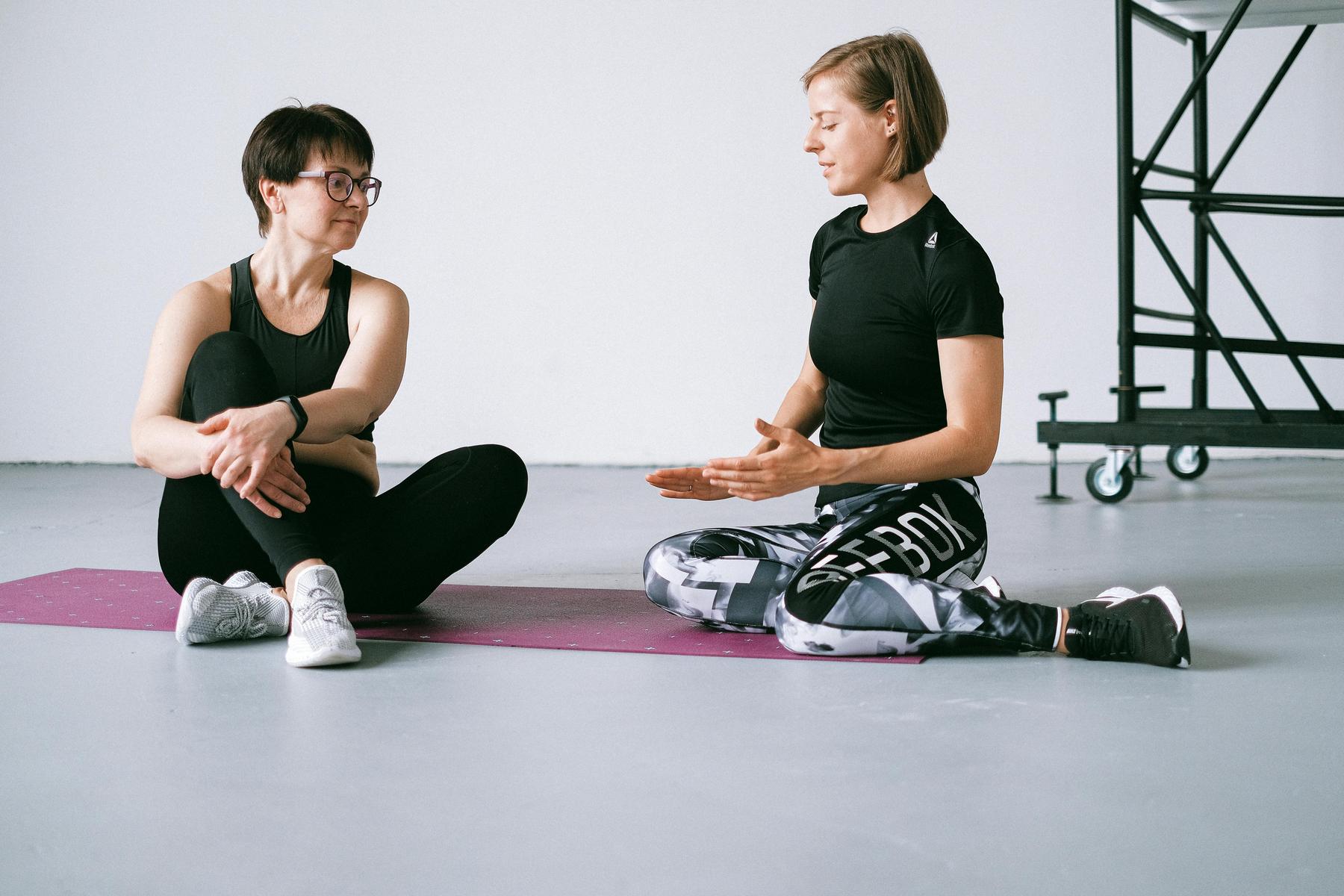In today’s health-conscious society, the terms ‘exercise’ and ‘physical activity’ are often used interchangeably, creating confusion about their distinct roles in our wellbeing. This misconception can significantly impact health outcomes, particularly for those managing their weight. While both contribute to energy expenditure, they function through different mechanisms and yield varying results. Understanding these nuances is crucial—especially as 2025 data indicates that only 45% of Australian adults meet recommended physical activity guidelines, despite 67% believing they are sufficiently active.
What Defines Physical Activity vs. Exercise?
Physical activity and exercise represent distinct yet interconnected concepts critical to health and weight management. While they both involve bodily movement and energy expenditure, their definitions, purposes, and implementations differ significantly.
Physical activity encompasses any bodily movement produced by skeletal muscles that results in energy expenditure. This broad definition includes occupational tasks, household chores, recreational pursuits, and spontaneous movements like walking to the shops or climbing stairs. Physical activity occurs naturally throughout daily life, often without specific fitness goals.
Exercise, by contrast, represents a structured subset of physical activity—planned, repetitive, and purposeful movement specifically designed to improve or maintain physical fitness components. It follows prescribed parameters of frequency, intensity, time, and type (FITT principle) and typically targets specific fitness elements such as cardiovascular endurance, muscular strength, or flexibility.
Three key criteria differentiate exercise from general physical activity:
- Intentionality: Exercise deliberately targets specific fitness components, whereas physical activity may occur incidentally during daily routines.
- Structure: Exercise follows prescribed frequency, intensity, and duration parameters, while physical activity lacks such regimentation.
- Progression: Exercise programs systematically increase demands to induce adaptation, unlike most daily activities which remain relatively constant.
For instance, gardening constitutes physical activity, whereas a timed 30-minute cycling session with incremental resistance adjustments qualifies as exercise.
How Do Exercise and Physical Activity Affect Your Health Differently?
Both exercise and physical activity deliver substantial health benefits, though through distinct physiological mechanisms with varying intensity of outcomes.
Cardiovascular Health Benefits
Physical activity, even at moderate levels, reduces cardiovascular disease risk by creating a favourable metabolic environment. Regular movement throughout the day helps maintain healthy blood pressure levels and improves circulation. Research shows that accumulating 150–300 minutes per week of moderate-intensity physical activity decreases cardiovascular mortality by approximately 31%.
Exercise, particularly structured aerobic training, induces superior cardiorespiratory fitness gains, with studies demonstrating improvements of 15–30% in maximal oxygen consumption (VO₂max). These adaptations significantly enhance cardiac function, vascular health, and overall cardiovascular resilience.
Metabolic Effects
Daily physical activity stimulates non-exercise activity thermogenesis (NEAT), which accounts for 15–50% of daily energy expenditure. Remarkably, individuals with obesity typically exhibit 2.5 hours less standing time per day than their lean counterparts, highlighting NEAT’s potential role in weight management.
Structured exercise produces more pronounced metabolic adaptations. Aerobic exercise performed at 70% VO₂max elevates post-exercise oxygen consumption (EPOC), augmenting 24-hour energy expenditure by 6–15%. Resistance training preserves lean muscle mass during caloric restriction, preventing the approximately 20% metabolic slowdown typically observed with diet-only weight loss approaches.
Mental Health Impact
Both modalities positively influence mental wellbeing, yet exercise demonstrates more robust effects on clinical conditions. Regular physical activity correlates with approximately 12% lower depression risk per 4,400 daily steps. Meanwhile, structured exercise amplifies these benefits through neurotrophic factor upregulation; consistent aerobic sessions increase hippocampal volume by about 2% in older adults, potentially mitigating dementia risk.
| Aspect | Physical Activity | Exercise |
|---|---|---|
| Definition | Any bodily movement producing energy expenditure | Planned, structured physical activity aimed at fitness improvement |
| Examples | Walking, gardening, housework, taking stairs | Running programs, weight training, spin classes, swimming laps |
| Intentionality | Often incidental or necessary | Deliberate, goal-oriented |
| Structure | Unplanned, variable intensity | Follows frequency, intensity, time, type principles |
| Progression | Typically static or random | Systematically increases challenge over time |
| Energy Expenditure | Variable (15-50% of daily output via NEAT) | More predictable (300-600 kcal per session) |
| Primary Health Benefits | Reduced all-cause mortality (20-30%), improved insulin sensitivity | Enhanced cardiorespiratory fitness (↑15-30% VO₂max), increased muscle mass |
| Weight Management Role | Maintains baseline metabolism, prevents sedentary behaviour | Creates caloric deficit, preserves muscle during weight loss |
What Are the Recommended Guidelines for Both Exercise and Physical Activity?
Australian health authorities provide distinct recommendations for both general physical activity and structured exercise, recognising their complementary roles in optimising health outcomes.
Physical Activity Guidelines for Australian Adults
The Australian government’s physical activity guidelines advocate a dual approach:
- Minimum standard: 150–300 minutes per week of moderate-intensity physical activity or 75–150 minutes of vigorous activity
- Daily movement goal: Minimise sitting time and break up long periods of inactivity at least every 30 minutes
- Daily step target: 7,000-10,000 steps per day, with evidence suggesting benefits increase progressively with step count
The “Active Transport” initiative encourages replacing car trips with walking or cycling, potentially adding 1,200–2,000 kilocalories of weekly energy expenditure.
Exercise Prescription Principles
For specific fitness and weight management goals, more structured guidelines apply:
- Aerobic exercise: 30–60 minutes per day, at 40–59% heart rate reserve for weight maintenance, increasing to 60-89% for weight loss
- Resistance training: 2–3 sets of 8–12 repetitions, at 60–80% of one-repetition maximum for muscle hypertrophy, performed 2-3 days per week
- Flexibility training: Static stretches held for 10-30 seconds, 2-4 repetitions per muscle group, at least 2-3 days per week
Special Considerations for Weight Management
For individuals with a BMI ≥27, exercise guidelines require modification:
- Progressive overload: Begin with 10-minute exercise bouts, increasing duration by approximately 5% weekly
- Joint-friendly modalities: Utilise cycling, swimming, or elliptical training to minimise stress on weight-bearing joints
- Resistance prioritisation: Emphasise resistance training to preserve lean mass during caloric deficit
Research demonstrates that telehealth-delivered exercise and dietary interventions can reduce body weight by approximately 10.2% over six months when properly structured and monitored.
How Can Different Types of Movement Support Weight Management?
Weight management encompasses complex physiological and behavioural factors, with both exercise and physical activity playing crucial yet distinct roles in this process.
Physical Activity’s Contribution to Energy Balance
Daily physical activity establishes the foundation of energy expenditure beyond basal metabolic rate. Non-exercise activity thermogenesis (NEAT) represents a significant component of daily caloric output—ranging from 15% in sedentary individuals to 50% in highly active people.
Simple interventions like using standing desks increase NEAT by approximately 328 kilocalories per day without requiring structured exercise sessions. These small movement opportunities compound substantially over time; research indicates that individuals who fidget or maintain “restless” movement patterns throughout the day can expend an additional 350-800 kilocalories daily compared to those who remain stationary.
Exercise’s Targeted Impact on Weight Loss
Structured exercise produces more predictable energy expenditure and physiological adaptations specifically beneficial for weight management:
- Aerobic training at moderate-to-high intensities (70-85% of maximum heart rate) optimises fat oxidation during and after exercise
- Resistance exercise prevents the loss of metabolically active tissue during caloric restriction, maintaining resting metabolic rate
- High-intensity interval training (HIIT) generates greater post-exercise oxygen consumption, enhancing 24-hour energy expenditure by up to 15%
Research indicates that combining both exercise and increased daily physical activity produces superior outcomes compared to either approach alone. Telehealth-monitored programs that track both structured exercise compliance and daily step counts demonstrate approximately 20.2% greater weight reduction compared to traditional single-intervention approaches.
How Can You Incorporate Both Exercise and Physical Activity Into Your Daily Routine?
Successfully integrating both structured exercise and increased daily physical activity requires strategic planning and gradual implementation.
Building Physical Activity Into Daily Life
Creating an environment rich in movement opportunities represents the foundation of physical activity enhancement:
- Movement snacking: Incorporate 2-3 minute movement breaks hourly during sedentary work periods
- Active transport: Walk or cycle for journeys under 3 kilometres
- Environmental modification: Position frequently used items to require additional movement (e.g., printer in another room)
- Standing alternatives: Replace 2-4 hours of sitting time with standing or moving options daily
Australian workplace guidelines now recommend accumulating at least 2-4 hours of standing or light movement during an 8-hour workday, progressively increasing to 4 hours.
Structured Exercise Implementation
For optimal results, exercise should follow scientific principles while remaining practical:
- Progressive loading: Begin with manageable duration and intensity, increasing by 5-10% weekly
- Variety incorporation: Include aerobic, resistance, flexibility and balance components
- Enjoyment prioritisation: Select activities that generate positive psychological responses to enhance adherence
- Scheduling consistency: Establish regular exercise appointments with the same importance as work meetings
Telehealth platforms facilitate this integration through:
- Real-time videoconferencing for form correction during exercise sessions
- AI-driven movement analysis via smartphone cameras providing instant feedback on technique
- Wearable technology integration for monitoring both structured exercise and daily activity levels
Balancing Exercise and Physical Activity for Optimal Health
Understanding the distinct yet complementary roles of exercise and physical activity enables more effective health and weight management strategies. While physical activity provides a foundation of movement that supports metabolic health and reduces disease risk, structured exercise delivers targeted physiological adaptations that enhance fitness parameters and optimise body composition.
The evidence clearly demonstrates that neither approach alone maximises health outcomes. Instead, the integration of both—creating environments rich with incidental movement while systematically implementing progressive exercise programs—represents the most effective strategy for comprehensive wellbeing.
For those managing their weight, this dual approach offers particular advantages: physical activity maintains baseline energy expenditure and prevents the metabolic adaptations that often undermine weight loss efforts, while structured exercise preserves lean tissue and creates predictable energy deficits. Modern telehealth platforms leverage technology to support both elements, using real-time monitoring and feedback systems to enhance adherence and outcomes.
By reconceptualising movement as a spectrum rather than a binary choice between “active” or “sedentary,” individuals can develop more sustainable approaches to health management that accommodate real-world constraints while maximising physiological benefits.
Does walking count as exercise or physical activity?
Walking can function as either physical activity or exercise, depending on structure and intent. Incidental walking throughout the day (to the kitchen, around shops, etc.) constitutes physical activity. However, when walking follows scheduled parameters—such as 30 minutes at a brisk pace (5-6 km/h) with deliberate intensity monitoring—it meets the criteria for exercise. Research indicates that purposeful walking at moderate intensity delivers approximately 70% of the cardiovascular benefits of running while imposing significantly less joint stress.
How much physical activity compensates for a sedentary job?
Current evidence suggests that adults with predominantly sedentary occupations should aim for 60-75 minutes of moderate-intensity physical activity daily to offset health risks associated with prolonged sitting. This represents approximately 7,000-10,000 steps. Additionally, breaking sitting time every 30 minutes with 2-3 minutes of movement significantly improves metabolic markers. Standing desks provide modest benefits but don’t fully compensate for dedicated physical activity.
Can exercise compensate for low daily physical activity levels?
While structured exercise delivers substantial health benefits, research demonstrates it cannot fully counteract the metabolic consequences of prolonged sedentary behaviour. A phenomenon termed ‘exercise resistance’ occurs when individuals maintain high sitting time outside their exercise sessions. Studies show that 60 minutes of vigorous exercise cannot completely reverse the insulin resistance and lipid metabolism disruptions caused by 10+ hours of daily sitting. Optimal health outcomes require both regular exercise and frequent movement throughout the day.
How do exercise and physical activity requirements change with age?
As individuals age, the balance between physical activity and exercise recommendations shifts. Adults over 65 should maintain the standard 150 minutes of moderate activity weekly but place increased emphasis on multi-component exercise including balance activities (tai chi, yoga) at least 2 days weekly, progressive resistance training 2-3 days weekly to combat sarcopenia, and lower-impact aerobic options to accommodate joint changes. Physical activity recommendations emphasise accumulated movement rather than continuous sessions, with three 10-minute walks providing similar benefits to one 30-minute session for older adults.
What is more important for weight loss: exercise or daily physical activity?
Research indicates that sustainable weight management requires both components, though their relative contributions differ. Daily physical activity prevents the adaptive thermogenesis (metabolic slowdown) that often accompanies caloric restriction, while structured exercise creates predictable energy deficits and preserves muscle mass. Studies demonstrate that individuals maintaining high NEAT alongside structured exercise achieve approximately 20% greater weight loss and significantly better maintenance compared to exercise-only approaches. This integrated approach forms the foundation of effective telehealth weight management programs.



